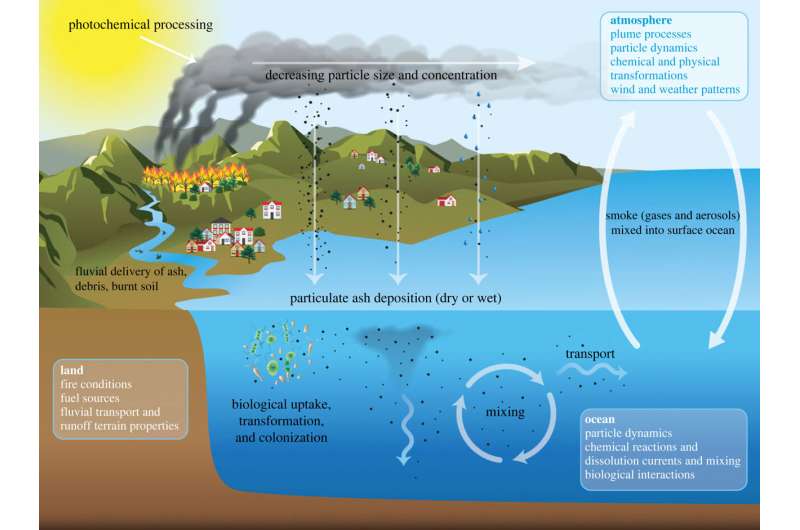November 2, 2023 report
This article has been reviewed according to Science X's editorial process and policies. Editors have highlighted the following attributes while ensuring the content's credibility:
fact-checked
peer-reviewed publication
trusted source
proofread
Wildfire plumes deposit ash on seawater, fueling growth of phytoplankton

A team of marine biologists at the University of California has found that large wildfires, such as the Thomas Fire in California, can deposit large amounts of ash on seawater, fueling the growth of phytoplankton. In their study, reported in the journal Proceedings of the Royal Society B: Biological Sciences, the group tested the impact of ash from a major wildfire on seawater samples in their lab.
Prior research has shown that large forest fires and wildfires produce a large amount of ash that remains in the air for a period of time before falling. Prior research has also found that when ash falls onto land, the result is usually positive—the ash serves as a form of fertilizer.
Unfortunately, the same cannot be said for rivers and lakes—the sudden infusion of large amounts of toxic metals can kill fish and other aquatic creatures such as mollusks. For larger bodies of water, it can lead to algal blooms that remove oxygen from the water, resulting in dead zones.
For this new study, the research team tracked wildfire plumes over the ocean. They collected samples of ash generated by the Thomas Fire in 2017 and brought them back to their lab for testing.
The team mixed samples with fresh seawater in a jar. After a few days, they found that the ash/water solution contained high levels of dissolved nutrients, such as nitrogen and silicic acid. They found it also contained high levels of metals.
The researchers then added more seawater to their ash/water solution that also contained microorganisms native to the ocean. They found that after several days, the number of microorganisms was twice as high as it was in a control sample of seawater.
They also noted that they did not find any evidence that the ash had a toxic impact on the sea microorganisms. They suggest their work implies that wildfire plumes that settle on the ocean surface can lead to growth of phytoplankton communities.
More information: T. M. Ladd et al, Food for all? Wildfire ash fuels growth of diverse eukaryotic plankton, Proceedings of the Royal Society B: Biological Sciences (2023). DOI: 10.1098/rspb.2023.1817
Journal information: Proceedings of the Royal Society B
© 2023 Science X Network


















